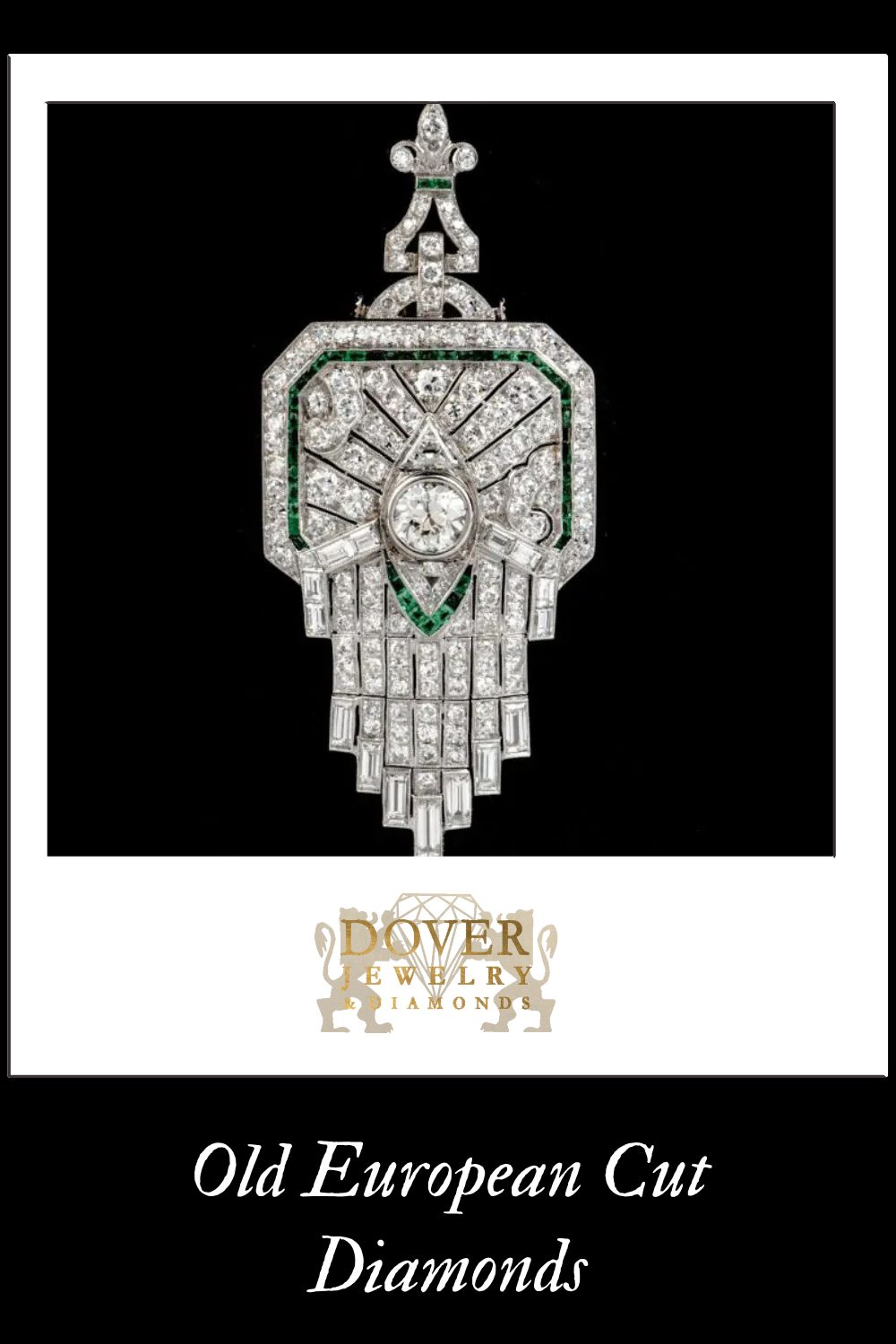
Old European Cut Diamonds: A Journey through Time and Brilliance
When it comes to appreciating the exquisite beauty of diamonds, it’s important to recognize their diverse range of cuts and the histories associated with them. Among these, the Old European Cut (OEC) diamonds stand out as relics of a bygone era, epitomizing the aesthetic standards and technological skills of the late 19th and early 20th centuries. At Dover Jewelry & Antiques, we take pride in curating Vintage Cut Diamonds and pieces that tell tales of yesteryears, and OEC diamonds are gems in the literal and figurative sense of the word.
A Brief History of Old European Cut Diamonds
The Old European Cut diamond emerged during the late 1800s, succeeding the Old Mine Cut, a square-shaped diamond with rounded corners. With the progression of diamond-cutting technology and evolving tastes, the OEC came to prominence. Boasting a circular shape, it became the precursor to today’s modern round brilliant cut.
However, what differentiates the OEC from its modern counterparts is its deeper proportions and broader facets. When viewed from the top, you’ll notice a somewhat blocky pattern, thanks to its large culet (the bottom tip of the diamond) and smaller table (the flat top surface).
Key Specifications
- Shape & Symmetry: Unlike the perfectly symmetrical modern round brilliant, the OEC may appear slightly off-round, adding to its unique charm.
- Facets: Typically consisting of 58 facets, they’re broader and flatter than those on modern stones.
- Culet: The OEC has a noticeably larger culet, sometimes even visible to the naked eye as a small circle at the diamond’s base.
- Table: The OEC’s table is generally smaller, creating a distinct play of light and shadow.
Modern-Day Jewels with Old European Cut Diamonds
While OEC diamonds harken back to an earlier era, they’re making a comeback in contemporary jewelry, favored for their unique charm and vintage appeal. Celebrities and jewelry aficionados alike have displayed a penchant for OECs, incorporating them into engagement rings and statement pieces.
Perhaps the most famous recent acquisition of an OEC diamond is Natalie Portman’s engagement ring. Always in keeping with today’s Jewelry Trends, this Exquisite creation represents Antique Diamond Jewelry at it’s finest. An antique round old mine-cut diamond weighing four carats and set in a double halo of pavé diamonds, a testament to the cut’s enduring allure.
The Value of Old European Cut Diamonds
But why are these diamonds so coveted? Their Diamond Value isn’t solely monetary; it’s rooted in their legacy:
- Historical Significance: These diamonds bridge the gap between antique handcrafted techniques and evolving technological advancements in gem cutting.
- Unique Appearance: The cut’s signature light play and depth are unparalleled, setting it apart from contemporary styles.
- Scarcity: With advances in diamond cutting, fewer OEC diamonds are available, making them rarer and therefore more valuable.
At Dover Jewelry & Antiques, we see OEC diamonds as more than just gemstones. They’re a window into the past, reflecting a world where precision was the product of human hands and keen eyes, rather than laser-guided machinery.
If you’re keen to own a piece of history or are simply enchanted by the Old European Cut’s unique allure, Contact Dover and discover our curated collection. After all, in an ever-evolving world, some things remain timeless.


